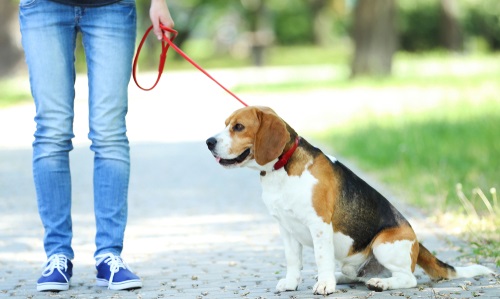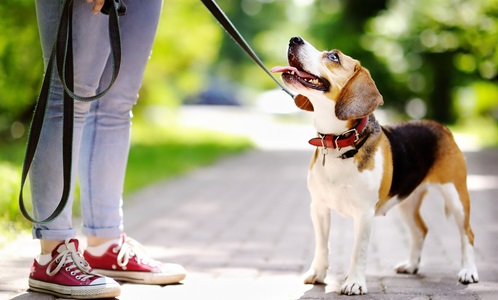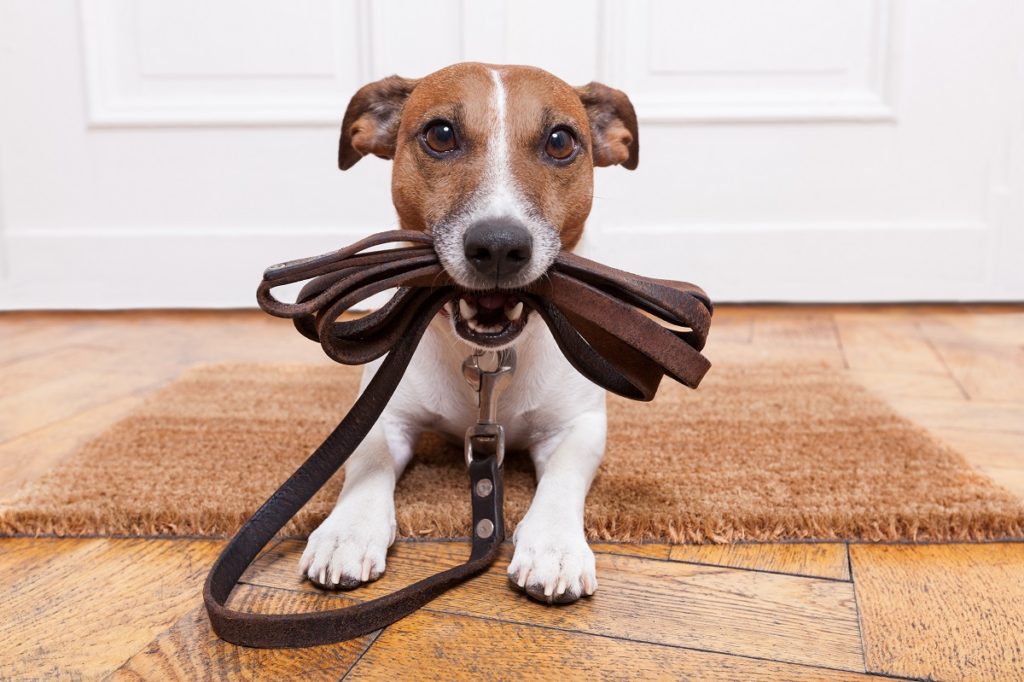Ever wonder why your dog acts differently on the leash? Does he get easily distracted by other people in the area? Does he become aggressive when crossing paths with another canine? If this is something you’ve noticed, you’re not alone. This is often referred to as “leash reactivity” and it’s very common.
Leash reactivity is driven by stress. There’s something about a leash which prompts stress and aggression in some canines. There are several reasons why a dog is reactive on a leash. When there is a reactive dog on a leash, they often show signs of canine aggression. Understanding why dogs act the way they do when on a leash will give you a much better understanding of leash reactivity and how to combat it. Fortunately, there are a few key changes you can make to train your dog to walk on a leash and reduce or even completely eliminate leash reactivity altogether.
This article will explain how to train a reactive dog on a leash and teach you what to do to handle this type of behavior in your four-legged friend.
How Normal Dog Behavior is Impacted by a Leash
Take a second to think about how dogs ordinarily act around one another when meeting off-leash. They’ll greet each other by sniffing or advancing and retreating in a cordial fashion as they greet one another. They may also show specific body language that is common in canine introductions. Whether they prefer to move slow, quick, retreat or move closer – when off the leash, pups are free to interact with each other however they please.
 Now, think about this same interaction, but with leashes. On a leash, dogs are generally forced to meet face-to-face, unable to turn their bodies to the side as they’re accustomed to. Prohibited by the leash, your dog may be unable to comfortably advance and retreat, circle around the other dogs and playfully interact as normal. While some dogs remain comfortable in this situation, what you may not know is this face-to-face interaction combined with restricted movement, can provoke a natural fight or flight instinct in your pup.
Now, think about this same interaction, but with leashes. On a leash, dogs are generally forced to meet face-to-face, unable to turn their bodies to the side as they’re accustomed to. Prohibited by the leash, your dog may be unable to comfortably advance and retreat, circle around the other dogs and playfully interact as normal. While some dogs remain comfortable in this situation, what you may not know is this face-to-face interaction combined with restricted movement, can provoke a natural fight or flight instinct in your pup.
Most dog’s don’t want to fight, but with the leash prohibiting his ability to increase distance, he may resort to aggression in the form of barking, lunging or growling – anything he can do to make the “threat” go away. Of course, both dogs are leashed and as their owners recognize the increased aggression, leashes become tighter. Unbeknownst to you, a tightened leash sends a signal to your dog that you’re stressed as well, thus resulting in a stress-filled canine stand-off. In this situation, with the option of flight restricted, dogs may resort to their fight instinct and pull on his leash.
Sometimes, owners react to this by telling their dog to sit as a form of punishment, thinking this will help correct the behavior. However, this can actually make things worse… much worse. It teaches your dog that encounters with other dogs, potentially even people, can cause punishment, which also increases canine anxiety.
This action may also teach your dog that growling or barking is bad. Dogs growl and bark as a warning sign before they bite. If they’re taught these behaviors are bad, he may end up lunging and biting another dog without warning. Remember, when trying to correct these situations, you could be reinforcing bad behaviors. That’s why it’s so important to learn how to train your pup the right way before taking action.
What Next?
Fortunately, there are some training techniques you can implement to reduce leash reactivity. If you master the art of training a dog, you may even be able to eliminate it all together. Training starts the moment you put the leash on.
Begin by getting your dog’s attention and rewarding him for looking at you. Start in an environment with few distractions, such as inside your home. Continue reinforcing this behavior over time as you go outside and expose your pup to different environments. This teaches him to look at you no matter where he is. You can use this tactic when you’re out walking and see another dog approaching.
 This technique teaches your dog to associate the presence of other dogs as something positive. As you begin to make progress, make sure to introduce your dog to new environments slowly. The last thing you want to do is to put them in a situation that forces them to lash out once again. If your dog ever barks or lunges, don’t punish him! It may mean you got too close or moved too quickly towards the other dog.
This technique teaches your dog to associate the presence of other dogs as something positive. As you begin to make progress, make sure to introduce your dog to new environments slowly. The last thing you want to do is to put them in a situation that forces them to lash out once again. If your dog ever barks or lunges, don’t punish him! It may mean you got too close or moved too quickly towards the other dog.
If you find your dog is inevitably going to come into contact with another canine, this is when you can put your training to the test. Keep his attention even if the other dog becomes aggressive as you walk by. Reinforce this behavior with rewards, then as soon as the other dog is gone, stop. This teaches your dog that other animals can also be associated with good things – like treats!
Once you are able to properly train your dog and get him to obey you, you’ll have no more problems on your daily walks!
Sources:
- Caplan, Christine. “How to Train a Leash Reactive Dog.” Rover, 31 May 2018, www.rover.com/blog/train-leash-reactive-dog/.
- “These Dog Training Tips Can Help Your Pup Overcome Leash Reactivity.” PetMD, 18 May 2018, www.petmd.com/dog/training/these-dog-training-tips-can-help-your-pup-overcome-leash-reactivity.
- Rakosky, Erin. “Reactive Dog vs. Aggressive Dog.” American Kennel Club, 30 Aug. 2016, www.akc.org/expert-advice/training/reactivity-vs-aggression/.




